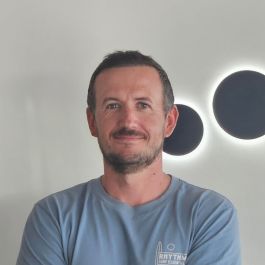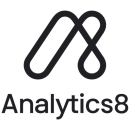An impactful customer experience isn’t a matter of happenstance; rather, it’s “shaped by real people and real needs.”
At least, that’s how Product Manager Kaialia Morrow and her teammates at Lowe’s see it. They recently created Lowe’s 360 Viewer, an immersive design experience powered by Apple Vision Pro, which allows customers to step inside their future home renovation virtually before spending money on materials or installation.
“This wasn’t just about flashy tech; it was about solving a real emotional and financial pain point,” Morrow said.
By putting the customer first, she and her peers were able to deliver a solution with real-world impact. At supply chain technology provider FourKites, Senior Engineering Manager Amit Singh and his teammates reached a similar outcome when they recently developed AI agents that are designed to handle advanced workflows associated with things like document processing and shipment tracking.
According to Singh, this new solution doesn’t just reduce the amount of time the company’s customers spend on repetitive tasks — it’s a win for the business as well.
“We’re now positioned to help customers scale, which drives our growth,” Singh said.
Below, Morrow, Singh and representatives from 15 other companies show how their teams deliver powerful customer-centric products and how their employers encourage them to prioritize innovation.
Yext’s platform is designed to help multi-location brands connect with their customers across every digital touchpoint.
Describe a recent product innovation that you are proud of contributing to. What went into this project?
We’re still in the early phases of what’s likely the biggest disruption to tech since the web: the rise of AI-driven search and discovery. For a product organization, that’s a huge opportunity to rethink how we help customers make big, meaningful improvements to their visibility online.
Our first major step in this space was our recent launch of Yext Scout, a hyperintelligent AI agent that analyzes over 2 billion trusted data points each month to surface the insights that matter most. Scout helps brands navigate the evolving search landscape by tracking visibility across traditional and AI search platforms, benchmarking performance against local competitors and delivering prioritized, actionable recommendations. Fully integrated into the Yext platform, it empowers brands to quickly act on these recommendations to improve both visibility and perception.
“Scout helps brands navigate the evolving search landscape by tracking visibility across traditional and AI search platforms, benchmarking performance against local competitors and delivering prioritized, actionable recommendations.”
In parallel, we’re building a feature that shows brands exactly where they appear in generative results and traces them back to the original source. We’re also running live experiments to understand what type of content surfaces most often, testing formats and spotting patterns in the questions and answers.
The key to making all of this work? Setting clear goals, removing roadblocks and giving teams the space and autonomy to ship quickly. Product, data science, engineering, design and go-to-market teams worked side by side with constant feedback loops instead of hand-offs so we could learn and adjust in real time.
What impact will this product innovation have on your customers? What about your business as a whole?
Customers don’t have to guess how to appear in new search experiences; we’re doing the testing and learning for them. By identifying the content and formats that surface most often then building that intelligence into our products, they benefit automatically. The result: stronger visibility, more accurate representation and no extra effort on their end. For our business, it strengthens our position as a leader in digital presence, deepens customer trust, and opens up new opportunities to expand our platform’s value.
How does Yext set you and your team up to constantly innovate?
At Yext, our product team has the space, context and tools to try bold ideas and test them in the real world. Every outcome — win or not — is just data we can use to get better. That’s what keeps innovation from feeling like a side project and makes it part of our everyday work, which we are definitely trying to do more of with our entire product suite. It’s not always perfect — far from it — but when something we build takes off, the momentum is contagious, and all the effort is 100 percent worth it.
SOPHiA GENETICS’ AI-powered platform enables healthcare organizations to garner insights from complex multimodal datasets and share knowledge with other institutions across the industry.
Describe a recent product innovation that you are proud of contributing to. What went into this project?
Our tech team has recently delivered our new web-based platform, bringing us one step ahead in our mission to democratize precision medicine. The genomics module of the SOPHiA DDM GEN2 Web Platform gives access to a brand-new genomics workflow.
Based on microservices, a new scalable back-end system has been designed to effectively process high volumes of data. The user interface has been fully redesigned to provide a seamless experience, from new analysis requests to completing an interpretation case. On top of that, it allows users to tie their workflow to some of their custom needs, such as gene panels, custom filtering, bio markers and more. Interpretation screens are customizable, while germline and somatic applications have specific widgets. The development and integration of a new tertiary annotation system is another major feature to highlight. It includes our in-house AI based pathogenicity predictors and gives access to variants annotated on multiple transcripts. Selectable transcripts is another cutting-edge capability. Users now have the ability to dynamically switch from one transcript to another or set their own strategy.
What impact will this product innovation have on your customers? What about your business as a whole?
The SOPHiA DDM GEN2 Web platform has been developed hand to hand with our final users. Impact on patient care is at the heart of what we do. This is why our platform has been designed to answer the different needs of our users. From small germline panels to future whole genome sequencing, our interpretation workflow responds to any use case. It is by design focused around maximizing performances. Our optimized interface and its seamless interpretation workflow has a strong impact on turnaround time. Our customer-centric approach and three-weeks release cycle allow us as a team, department and company to swiftly respond and adapt to customer needs.
“From small germline panels to future whole genome sequencing, our interpretation workflow responds to any use case.”
How does SOPHiA GENETICS set you and your team up to constantly innovate?
As the company vision is shared across our teams and business expectations are understood, our teams can move in the same direction. A firm understanding of the business and its priorities allow us to put our efforts where it matters the most. Regular customer exposure is a good way to keep each member of the team connected to our final users and put innovation at the service of our end users. We are collaborating to the same goal in different ways but are all committed to bringing value to our products.
Within the platform development team, innovation is part of our DNA. By sharing and reinforcing our collective mission, our team members are empowered to take any kind of initiatives that will drive our platform in the right direction, such as better user interface/user experience, large analysis volume processing and more. Yes, we are driven by our product team and user needs, but our developers are leading the way. There are many examples of features that were pushed and brought to life as initiatives of our tech team. This is why we are proud of our collaborative mindset.
Alloy’s platform is designed to help banks, credit unions and fintech companies manage identity risk throughout the customer lifecycle.
Describe a recent product innovation that you are proud of contributing to. What went into this project?
One of the most exciting things I’ve had the opportunity to work on has got to be the Alloy Marketplace. The idea is simple but powerful: Give users a centralized place on our dashboard to explore and reuse Alloy’s building blocks, including partner integrations, rules, workflows and more. The Marketplace will help customers understand what’s possible in the platform and will give them the tools to confidently update their policies without starting from scratch.
Last year we worked to modernize our rule editor and during discovery, we heard a consistent theme from clients around wanting to be able to see and leverage best practices from across the industry. Policy editors were often looking for new partners to integrate into their processes and building rules from scratch. The process made it hard to keep up with evolving fraud patterns and compliance requirements. That insight led us to invest more in documentation, build out a “rule library,” and ultimately shaped the vision for the Marketplace.
What impact will this product innovation have on your customers? What about your business as a whole?
The Marketplace will give customers the ability to explore all of our partner integrations, quickly adopt best-practice templates, react faster to regulatory or fraud changes, and reduce the overhead of building from zero. It’s not just about speed; it’s about confidence. Clients will know that what they’re pulling in is vetted and aligns with how Alloy thinks about risk. And by making it easier to iterate on logic, the Marketplace lays the groundwork for more agile policy management.
“The Marketplace will give customers the ability to explore all of our partner integrations, quickly adopt best-practice templates, react faster to regulatory or fraud changes, and reduce the overhead of building from zero.”
From a business perspective, the Marketplace is a force multiplier. It will ease the burden on support by helping customers self-serve while also creating new opportunities for monetization. It moves us closer to a product-led growth model, where users can explore, experiment, and launch solutions directly within the product with no long implementation cycle required. It will also help customers unlock return on investment more quickly. Whether they’re reducing fraud losses, speeding up customer onboarding, increasing their automation rates or tightening compliance workflows, the Marketplace will give them a competitive edge.
How does Alloy set you and your team up to constantly innovate?
Innovation at Alloy is baked into how teams operate. Product and engineering are structured into cross-functional squads that own specific use cases end to end. Design, product, engineering, customer success and sales are all plugged in. That means we’re always close to the customer and are able to move fast when something’s not working or needs to evolve.
Alloy gives us the autonomy to take ownership and the accountability to have real impact. I’ve led client discovery, prototyped new ideas and shaped go-to-market strategy alongside my team. Weekly syncs, shared docs and open lines of feedback mean you never have to wait for permission to fix something or try a new approach. When looking specifically at product design at Alloy, we have a mandate to mold the vision for what’s to come for our organization. Of course, we contribute to day-to-day squad work, but we also carve out time to look ahead. That means running design sprints, structuring projects in phases so there’s always a clear next step and creating sizzle reels to rally the company around the future we’re building. We’re not just designing features; we’re shaping the future of how Alloy thinks, builds and grows.
Onebrief’s software is designed to enable military forces to optimize planning and collaboration.
Describe a recent product innovation that you are proud of contributing to. What went into this project?
I led development of AI Assist, a generative AI feature that helps military planners write better plans, faster. This was a challenging problem; the planning domain is high-stakes, context-rich and has zero tolerance for hallucinations. We partnered with Anthropic to integrate Claude, leveraging its strong alignment and reasoning capabilities. But deploying it in our environment meant solving for strict access controls, disconnected operations and mission-specific context injection. We built a secure inference layer, customized prompt engineering for structured outputs and tightly integrated the experience into our planning user interface. We also implemented human-in-the-loop controls to keep users in command. This was a full-stack, cross-functional effort that blended infra, app and ML engineering, and showed how cutting-edge AI can meet national security needs.
What impact will this product innovation have on your customers? What about your business as a whole?
AI Assist saves planners hours by generating structured, context-aware content and surfacing relevant data instantly. What once took a team hours — summarizing guidance, drafting operational narratives, aligning formats and so on — can now be done in minutes. That time savings translates to faster decisions and more strategic thinking. But this is just the beginning.
We’re building for a future where over 90 percent of staff work is recommended by AI and approved by a human. Onebrief helps military staff move further away from manual workflows and into AI-accelerated and automated cycles. Today, users report three times faster work with Onebrief. In the future, users will experience 100 times more productivity. Our mission is to make the staff as a whole superhuman, meaning faster, smarter and more efficient. AI Assist supports this vision.
“Onebrief helps military staff move further away from manual workflows and into AI-accelerated and automated cycles.”
How does your employer set you and your team up to constantly innovate?
At Onebrief, innovation is embedded in our DNA through a deliberate framework that empowers our team. First, we prioritize autonomy: Engineers and product leads are granted ownership of features, with encouragement to do research and development sprints to support rapid prototyping and iteration.
Second, cross-functional collaboration is key. We blend domain experts, like former military planners, with tech specialists often. Enduring innovations like AI Assist are grounded in real-world needs. Access to cutting-edge tools, including partnerships with AI leaders like Anthropic, provides the technical edge.
Third, a culture of psychological safety encourages risk-taking. Failures are debriefed as learning opportunities, not punished through post-mortem reviews. Leadership supports continuous education — conferences, courses and internal hackathons — to help keep us at the forefront. This setup not only sustains innovation but scales it, aligning with our mission to revolutionize planning across the Department of Defense. We’ve seen tangible results: faster feature rollouts and happy users.
Lowe’s offers a suite of home improvement products and services for both professionals and consumers.
Describe a recent product innovation that you are proud of contributing to. What went into this project?
One of the most exciting innovations I’ve had the privilege of contributing to is the Lowe’s 360 Viewer, an immersive design experience powered by Apple Vision Pro. This product allows customers to step inside their future home renovation virtually before they ever spend a dollar on materials or installation.
This wasn’t just about flashy tech; it was about solving a real emotional and financial pain point. Customers make high-stakes decisions when redesigning a space, and it can be incredibly stressful. My role is to ensure that this product doesn’t just impress, as it also needs to resonate with our customers; not only the homeowners but our in-store designers as well. If it doesn’t make a designer’s workflow better or help them close a sale with confidence, it won’t succeed.
That meant going deep into the process: interviewing customers, sitting down with in-store designers and collaborating closely with our design and engineering teams. We gathered feedback on where the pain points were, what caused hesitation, frustration, or confusion during the design journey, and used that insight to guide every decision. This product was shaped by real people and real needs.
What impact will this product innovation have on your customers? What about your business as a whole?
The impact is powerful. For customers, this is about confidence and peace of mind. Remodeling a kitchen or bathroom is a huge investment, often tens of thousands of dollars, and with 360 Viewer, they can “walk through” their space before making that commitment. That’s an emotional unlock. They can see how materials and layouts actually feel, which helps eliminate doubt and avoid costly mistakes.
“Remodeling a kitchen or bathroom is a huge investment, often tens of thousands of dollars, and with 360 Viewer, they can ‘walk through’ their space before making that commitment.”
For Lowe’s, it’s a differentiator. This is more than a product — it’s a statement. We’re not just here to sell materials; we’re here to lead the future of home improvement. Lowe’s is serious about merging cutting-edge technology with meaningful customer experiences. We’re not just selling cabinets or countertops; we’re giving customers an experience that makes them feel supported, understood and excited. That creates long-term loyalty. And when customers trust us with their vision, they keep coming back not just for one project but for life.
How does Lowe’s set you and your team up to constantly innovate?
At Lowe’s, the biggest enabler of innovation is trust. Trust in the process, in the people and in the long-term vision. Leadership understands that not every innovation is perfect on day one, but they recognize strong foundations and invest in teams who have the talent and drive to refine, learn, and deliver.
Our team also operates with deep trust in one another’s skills and instincts. That environment gives us the freedom to take smart risks, experiment, and build experiences that matter not just for the bottom line but for the people walking through our stores every day.
My goal is to make people happy, whether that’s a customer gaining the confidence to move forward with their project or a store associate feeling proud of the tools we’ve built to help them shine. And what makes this work so meaningful is that Lowe’s is striving toward those same goals across the organization. There’s a shared commitment to building experiences that genuinely make a difference in people’s lives. When our values align like that, the impact goes far beyond the product; it becomes about creating moments of joy, confidence and real value for the people we serve.
PrizePicks is an independent skill-based fantasy sports operator covering a wide range of sports leagues, from the NFL to the NBA.
Describe a recent product innovation that you are proud of contributing to. What went into this project?
One of our teams recently released member profile display names as well as “followers/following.” This is the first time we’ve created a solution to help our members connect with one another, follow each others’ lineups, and share their PrizePicks personalized stats. This was a big effort building each individual piece and then ensuring they connected together seamlessly for our members. We’ve had a ton of fun playing with the features, and it’s been awesome seeing our members rapidly adopt them.
“This is the first time we’ve created a solution to help our members connect with one another, follow each others’ lineups, and share their PrizePicks personalized stats.”
What impact will this product innovation have on your customers? What about your business as a whole?
This is our first step in delivering best-in-class community features for our members. We’ve heard them loud and clear, and they want more ways to play together. This is the first step in that process, and we’re excited to share more fun features in the very near future. Stay tuned!
How does PrizePicks set you and your team up to constantly innovate?
PrizePicks is unafraid to take big swings and build complex features to deliver the value our members want. Our teams have been empowered to create a product strategy around the needs of our members, specifically the community aspects members have been asking for. Once we’re aligned on that strategy, we’re given autonomy to move fast and deliver for PrizePicks members. The team is also great at collaborating to source internal feedback to continuously iterate and improve our products before we put them into the hands of our members. We’re also empowered to dig into our data and conduct member interviews to source insights that can help us continue to improve this suite of features.
FourKites combines real-time digital twins of orders, shipments, inventory and assets with AI-powered digital workers to help companies prevent disruptions, automate routine tasks, and optimize performance across their supply chain.
Describe a recent product innovation that you are proud of contributing to. What went into this project?
We built AI agents that can handle advanced workflows associated with things like document processing, shipment tracking and customer service. The project started when we saw customers spending hours on repetitive tasks. One global manufacturer was processing 10,000 more than supplier documents monthly by hand. Our engineering team partnered with providers to create agents that achieve 99.1 percent accuracy. Part of the work is to also ensure people are comfortable with AI doing work they’d done for years, which means we prioritized processes that keep humans in the loop for quality checks and have rolled out capabilities gradually to build confidence.
What impact will this product innovation have on your customers? What about your business as a whole?
Our food shipper customers save two to three hours per person each day. That adds up. One prevented $700,000 thousand in penalties and saved $60,000 thousand per spoiled trailer by catching issues early. Meanwhile, an electronics distributor is onboarding suppliers in days instead of weeks, cutting integration costs by 80 percent.
People used to spend their mornings copying tracking numbers from emails into spreadsheets. Now, they work on actual problems. The food shipper’s logistics manager specifically mentioned how this lets them “focus our resources on higher-value activities” and noted the “impact on our efficiency and employee satisfaction.”
“People used to spend their mornings copying tracking numbers from emails into spreadsheets. Now, they work on actual problems.”
We’re now positioned to help customers scale, which drives our growth. We started ten years ago as a real-time visibility platform. Then, we evolved to provide recommended actions. Now, our AI agents automate those actions and workflows — a natural evolution. By leveraging our vast network of supply chain data and real-time digital twins of orders, inventory, assets and shipments, we deliver meaningful business outcomes. Our AI agents achieve 99.1 percent accuracy while processing millions of transactions daily.
How does FourKites set you and your team up to constantly innovate?
We work directly with customers to understand their problems, and that’s how we developed our AI agents. We test new features with early adopters before wider releases, which reduces risk. We have a strong team of data scientists, an advanced tech stack and strategic partners that give us the technical backbone and expertise we need. Additionally, the modular architecture we built lets us experiment without breaking existing systems. We document what works and what doesn’t, turning every project into shared knowledge. Leadership backs calculated risks and understands that innovation requires some failures along the way.
Accuris’ solutions are designed to enhance communication and collaboration in engineering organizations by digitizing standards and internal requirements.
Describe a recent product innovation that you are proud of contributing to. What went into this project?
A recent innovation at Accuris brought GenAI into our supply chain parts platform, enabling customers to interact with data through an intelligent agent. Instead of clicking through filters, users can now chat with CRAiG, our AI assistant, to get fast, accurate answers. Customer feedback played a big role in shaping the experience, helping us fine-tune usability, accuracy and trust. Internally, GenAI is also speeding up development by automating repetitive tasks, giving teams more time to focus on building smarter tools.
What impact will this product innovation have on your customers? What about your business as a whole?
For customers, this innovation creates a more intuitive and responsive way to explore parts data. CRAiG, our AI agent, helps them quickly get the insights they need, whether it’s finding alternates, understanding specs or assessing risk through a guided, conversational experience. New GenAI capabilities like summarization, intelligent recommendations and dynamic query refinement are driving faster decisions and unlocking new ways to innovate. For the business, it streamlines development, reduces repetitive work and accelerates our ability to deliver new AI-driven features. It’s laying the foundation for smarter tools and future monetization opportunities.
“For customers, this innovation creates a more intuitive and responsive way to explore parts data.”
How does Accuris set you and your team up to constantly innovate?
Accuris creates space for innovation by giving teams the freedom to experiment with new technologies and the support to move quickly. Access to real customer feedback, modern tools like Databricks and MLflow, and strong cross-team collaboration help ideas turn into working solutions quickly. Leadership encourages rapid prototyping, continuous learning and exploring AI capabilities that push our products forward.
AlertMedia’s threat intelligence, emergency communication and travel risk management solutions help companies of all sizes identify, respond to and recover from critical events faster and more confidently.
Describe a recent product innovation that you are proud of contributing to. What went into this project?
At AlertMedia, we’re continuously exploring how emerging technology, especially AI, can redefine user experiences. Making good software isn’t just about adding features; it’s also about usability and accessibility. Customers want applications to anticipate their needs, guiding them effortlessly through complex tasks. We recognized an opportunity to leverage AI-driven workflows, especially as we began integrating a recently acquired company into our platform. Instead of sticking to traditional methods that rely heavily on users’ prior knowledge or extensive training, we took a fresh approach. We examined every action that users typically perform, identifying areas where AI could simplify or even fully automate processes, always ensuring that customers remain informed and retain control.
What impact will this product innovation have on your customers? What about your business as a whole?
This innovation substantially lowers the barrier of entry for our customers. It empowers more individuals within an organization to engage confidently with our software, expanding usage internally. Even businesses without deep technical expertise can now leverage capabilities they previously might never have considered accessible.
“Even businesses without deep technical expertise can now leverage capabilities they previously might never have considered accessible.”
Nearly everyone has experienced the steep learning curve that typically accompanies being given access to a new tool or application. No one wants to make a mistake, and as a result, it’s very common for software to be underutilized. AI allows us to flatten the learning curve, helping users feel more confident, more quickly. Ultimately, this means greater customer adoption, increased engagement and stronger retention.
How does AlertMedia set you and your team up to constantly innovate?
At AlertMedia, good ideas come from everywhere, irrespective of role or title. Innovation isn’t an afterthought — it’s built into our roadmap, with dedicated time allocated specifically for exploration. Additionally, we regularly host engineering-driven hackathons, providing an open platform for ideas to thrive organically from our teams. As an engineering team, we also get to engage directly with new technologies and solve meaningful problems at scale, keeping our work exciting and impactful.
Regal.ai’s AI agent platform is designed to help organizations transform their support, sales and operations teams with AI calls.
Describe a recent product innovation that you are proud of contributing to. What went into this project?
As an AI forward deployed engineer at Regal.ai, I help customers launch AI voice agents that use retrieval-augmented generation to reference FAQs, websites, PDFs and other documents when responding to real-time questions. I recently improved how our RAG was built into our product, partnering with the product owner to provide feedback from my customer implementations and highlighting often overlooked needs, such as automatic website scanning, average document volume, and key usability considerations, to show how RAG was built into Regal. I shared direct customer pain points, needs and personal implementation experience, which the product owner incorporated into their design process.
Collaborating cross-functionally and contributing to product development from the frontlines has been one of the most rewarding parts of my role at Regal.ai. Seeing my feedback come to fruition through our product owners’ innovation has been exciting and energizing!
What impact will this product innovation have on your customers? What about your business as a whole?
RRAG is essential when building advanced AI voice agents. It enables real-time access to external data sources, whether it’s a company website, a library of FAQs or documents like pricing sheets, so the agent can deliver accurate, contextual responses. At Regal.ai, RAG is seamlessly integrated into our platform. It allows customers to empower their AI agents with up-to-date, relevant information that enhances the user experience without requiring constant manual updates.
“It allows customers to empower their AI agents with up-to-date, relevant information that enhances the user experience without requiring constant manual updates.”
How does Regal.ai set you and your team up to constantly innovate?
At Regal.ai, innovation happens naturally because cross-functional collaboration is built into the culture. As a forward deployed engineer, I regularly connect with the product team to share customer feedback and shape upcoming features. We have monthly engineering show-and-tells to surface new ideas and learn from each other’s work, and there’s a strong culture of jumping in to brainstorm and solve problems together. It’s the kind of environment where good ideas move quickly and everyone has a seat at the table.
Hospitals and health systems can use TigerConnect’s platform to simplify clinical and patient communication.
Describe a recent product innovation that you are proud of contributing to. What went into this project?
CareConduit represents everything we’ve been building toward: a platform that finally solves healthcare’s fragmentation problem at scale. What makes me most proud isn’t just the technology; it’s how we approached the challenge.
Instead of building another point solution that only solved for one clinical workflow, we asked: “What if we could eliminate the integration complexity that’s been plaguing hospitals for decades?” That led us to create a cloud-native platform that unifies disparate systems without the traditional IT burden.
Our teams worked directly with frontline clinicians to understand where workflows break down,and partnered closely with hospital IT teams who are already stretched maintaining mission-critical infrastructure. What we ended up with is not just software but a platform that maximizes the utility of existing systems and accelerates the value of new solutions.
What impact will this product innovation have on your customers? What about your business as a whole?
For our customers, CareConduit eliminates the choice between innovation and operational sanity. Hospitals can now automate critical workflows without the traditional IT headaches, which means clinical teams spend less time managing technology and more time on patient care.
“Hospitals can now automate critical workflows without the traditional IT headaches, which means clinical teams spend less time managing technology and more time on patient care.”
But there’s an even bigger opportunity here: CareConduit unlocks partnerships with strategic vendors working on AI in healthtech. We can serve as the insight delivery mechanism, ensuring AI-generated insights reach the right clinician at the right time with the right context. Instead of hospitals juggling multiple vendor integrations, we become the unified layer that makes all these innovations actually work together. From a business standpoint, this positions us at the center of healthcare’s digital evolution. We’re moving from solving communication problems to enabling entirely new ways of delivering care, which opens market opportunities we couldn’t access before and strengthens our relationships with customers who see us as strategic partners.
How does your employer set you and your team up to constantly innovate?
Innovation at TigerConnect starts with solving real problems for our customers and is deeply rooted in our values, particularly “Lead Through Ambiguity” and “Move as One Team.” We're constantly in dialogue with healthcare providers because the best innovations come from understanding where care breaks down today, and we actively collaborate across product, engineering and go-to-market teams to ensure we’re building solutions that actually work in the real world.
What sets us apart is our willingness to tackle hard problems that others avoid, embodying “Own It” and “Prioritize Impact Over Activity.” We leverage AI tools for rapid prototyping, market research and validating concepts that would have taken months to test before. We give our teams the freedom to think big, the resources to move fast and the mandate to keep iterating until we get it right. CareConduit required us to rethink fundamental assumptions about healthcare interoperability. That only happens when we truly live our values every day.
Cohere Health offers intelligent prior authorization in an effort to align patients, healthcare providers and health plans on an optimal care path that drives the best possible outcomes without high costs and burdensome administrative tasks.
Describe a recent product innovation that you are proud of contributing to. What went into this project?
I’m the director of product management for Cohere Health’s data platform, core technology platform and business intelligence solutions. While these are distinct focus areas, they’re deeply interconnected. Core technology provides our foundational infrastructure and monitoring tools, the data platform manages the flow and governance of data, and business intelligence delivers insights and transparency across the prior authorization workflow and beyond.
My customers span nearly every internal department as well as our external clients. Since joining Cohere in November 2024, I’ve worked closely with our technology leaders and product development teams to establish scalable delivery models and workflow processes across these areas, laying the foundation for continued growth and innovation.
With the scope of my role, there are innovations across each domain I could highlight. One I’m especially proud of is the formation of our new data platform team, which is a strategic shift focused not on a single feature but on foundational transformation. We brought together data management and data engineering to create a unified, high-performing data platform team. This shift supports our pillar of platform stability, scalability and usability. This required organizational realignment, including a new reporting structure under one technical leader and forming two squads organized by data origin: exogenous versus internally generated.
My role as a product leader is to set a clear vision, establish priorities, and define how the team works, which I do in collaboration with my technical partners. I introduced product engagement in areas that hadn’t previously experienced a close product/development partnership, worked to create a collaborative operating model and helped protect focus time for the development team.
What impact will this product innovation have on your customers? What about your business as a whole?
Our ability to manage and govern data to ensure it flows seamlessly and remains accessible across the organization is foundational to delivering value to both internal and external stakeholders. By integrating data engineering and data management into a single, unified team, we’ve created better alignment around priorities, clearer ownership and a shared understanding of the data lifecycle. The result is more consistent delivery of high-quality, analytic-ready data to downstream consumers, like business intelligence and actuarial teams, as well as improved responsiveness to client needs.
“By integrating data engineering and data management into a single, unified team, we’ve created better alignment around priorities, clearer ownership and a shared understanding of the data lifecycle.”
We’re also accelerating progress on automation, data quality and pipeline efficiency. By eliminating redundancy and unifying standards, team members can quickly identify opportunities to improve data consistency and reliability. This innovation positions us to scale more effectively as our use cases expand and our products grow more sophisticated and data-driven.
The team leaned into cross-training and continuous collaboration, and after just six months, we’re already seeing tangible results: greater cohesion, better responsiveness and increased velocity on key data initiatives. None of this would be possible without the talent, dedication and support of both the team and leadership.
How does Cohere Health set you and your team up to constantly innovate?
Our company operates in a dynamic environment where innovation isn’t optional; it’s a necessity. Fortunately, we’re structured to support it. Product and engineering follow shared operating principles that keep us aligned, focused and adaptable across teams. Leadership strikes a strong balance between autonomy and support. We’re empowered to focus on what matters most, with just the right level of check-ins and guidance. Our product processes give us room to pivot quickly without becoming overly bureaucratic.
As a director, I also appreciate that I’m not pulled entirely into presentation preparation and reporting cycles. I have the flexibility to stay close to the teams to help clear blockers, protect focus, and guide future direction, without losing the altitude needed to drive strategic priorities forward.
Machina Labs, Inc’s solutions, powered by robotics and AI, help manufacturers develop advanced composite and metal products.
Describe a recent product innovation that you are proud of contributing to. What went into this project?
To make precision parts, the tips of our robots need to be exactly where we command them, even when they’re applying tremendous force in constantly changing directions. In traditional industrial robotics, compensating for deflection is relatively straightforward because forces are predictable, like lifting a car on an assembly line. Our work is far more dynamic. As our robots form parts, the force’s magnitude and direction shift rapidly.
Our robotics team has developed a hybrid approach that combines predictive controls with live, on-the-fly compensation. Predictive modeling anticipates the loads the robots will experience throughout the path and the necessary compensation, while live compensation measures and adjusts for real-time conditions like material variability or lubrication changes. Balancing these two methods lets us achieve high accuracy in a highly challenging environment. This is just one example of the technical frontiers we’re pushing to redefine what’s possible in robotic metal forming.
What impact will this product innovation have on your customers? What about your business as a whole?
For customers, this means tighter tolerances, better surface finishes and the ability to produce more complex geometries — all with faster turnaround. For our business, it’s a step toward our mission of democratizing sheet metal manufacturing. Instead of investing millions in a stamping line and waiting years for tooling, customers can get high-quality parts in weeks at a fraction of the cost. This innovation helps us move faster, deliver at a higher quality, and tackle the increasingly ambitious designs our customers bring to us.
“Instead of investing millions in a stamping line and waiting years for tooling, customers can get high-quality parts in weeks at a fraction of the cost.”
How does Machina Labs set you and your team up to constantly innovate?
Our engineers are experts in their respective fields, and leadership empowers them to push the boundaries of what our systems can do. Engineers are encouraged to fully own their solutions. They’re enabled to take educated guesses, test, and adjust course as needed. Everyone understands that we’re operating at the technical limits of these systems, so big swings, fast failures and quick adjustments aren’t just accepted — they’re encouraged.
SambaSafety’s driver risk management solutions are designed to help fleets and insurers identify, manage and reduce risk.
Describe a recent product innovation that you are proud of contributing to. What went into this project?
One of the product innovations I’m most proud of is how we’ve transformed the way SambaSafety acquires and delivers data to build a truly holistic risk profile. As a long-standing leader in mobility risk management, we’ve developed the Risk Cloud to unify critical data sources — Federal Motor Carrier Safety Administration records, state Department of Motor Vehicles data, local court records, and telematics — into a single, actionable view of risk.
To continue meeting the evolving needs of our customers, we’ve focused on innovating not just what data we collect but how we collect and deliver it. This shift has allowed us to better understand the data itself, delivering it in a more timely manner, and guide our customers in using it effectively in their day-to-day operations. We continually work to innovate and focus on the accuracy, scalability and timeliness of the insights we deliver. This effort is the result of strong cross-functional collaboration. Teams across product, engineering, data science and compliance work together to ensure the data we deliver is not only comprehensive but also trustworthy.
What impact will this product innovation have on your customers? What about your business as a whole?
By enhancing how we gather, evaluate, and integrate data, we’ve empowered our customers to make more informed, confident decisions based on a complete picture of risk. Our shared goal is to provide customers with the clarity and confidence they need to act, knowing the information they’re using is reliable and up to date. Ultimately, this innovation reflects our commitment to turning complex data into meaningful intelligence, helping our customers to assess risk and/or manage risk more effectively and proactively.
“By enhancing how we gather, evaluate, and integrate data, we’ve empowered our customers to make more informed, confident decisions based on a complete picture of risk.”
How does SambaSafety set you and your team up to constantly innovate?
At SambaSafety, innovation isn’t just encouraged; it’s embedded into how our teams operate. What truly sets SambaSafety apart is how our leadership leads by example. They don’t just advocate for innovation — they actively participate in it. I’ve seen firsthand how our leaders foster a culture of continuous improvement through strategic support, operational excellence and strong cross-functional collaboration. We’re not satisfied with “good enough.” Instead, we’re encouraged to challenge assumptions and think creatively, starting with a simple but powerful question: “Why?”
Asking “why” helps us understand the root of the problems we’re solving. Why is this issue occurring? Why does it matter to our customers? This curiosity drives us to develop solutions that are not only valuable but also viable and sustainable. By continuously innovating on how we approach problems, we’re able to address today’s challenges while proactively preventing those of tomorrow.
Monte Carlo’s data and AI observability platform is designed to help enterprise teams reduce risks, improve data and AI health, and promote trust at scale.
Describe a recent product innovation that you are proud of contributing to. What went into this project?
I recently worked on the launch of Agent Observability, a monitoring capability for large language model applications. As enterprises adopt LLMs, they face a unique challenge: these systems are non-deterministic, so behavior can drift without warning. Our solution monitors both inputs and outputs, detects quality issues early and supports compliance needs. We designed it for multiple enterprise personas, including AI engineers and data scientists, while aligning with our broader strategy to be a critical part of the AI stack. This meant defining evaluation templates, sampling strategies and trace-level drill-downs so teams can pinpoint problems without prohibitive cost, and ensuring it works seamlessly across cloud data platforms, such as Snowflake, Databricks and BigQuery.
What impact will this product innovation have on your customers? What about your business as a whole?
For customers, it delivers a safety net for AI in production by catching drops in accuracy, relevance or consistency before they affect end users. It enables safer updates, more reliable model migrations and peace of mind when experimenting with faster or more cost-effective models. For Monte Carlo, it expands our role in AI-focused workflows and deepens platform adoption by supporting both data and AI reliability.
“For customers, it delivers a safety net for AI in production by catching drops in accuracy, relevance or consistency before they affect end users.”
How does your employer set you and your team up to constantly innovate?
Monte Carlo gives us the space and support to tackle high-impact, emerging challenges such as AI reliability. We get direct feedback from companies running LLMs at scale, which shapes the product from day one. We also build on a strong observability foundation that includes alert routing, reporting and integrations, allowing us to focus on solving AI-specific monitoring challenges without reinventing the basics. Most importantly, cross-team collaboration among our AI research, platform and monitoring teams is what makes innovations like Agent Observability possible.
Note: Agent Observability hasn’t launched yet but will later this quarter.
Altana is the world’s product network connecting businesses and governments on a common platform for global trade.
Describe a recent product innovation that you are proud of contributing to. What went into this project?
Following an unprecedented wave of new tariffs, global trade was thrown into chaos. Suddenly, trade compliance wasn’t a niche issue; it was a front-page crisis impacting over 80 countries. Overnight, leaders at the world’s largest importers and logistics service providers had to pivot their entire focus to tariffs. Our product roadmap had been aligned with users’ existing priorities, but in a moment of crisis, their new priorities became ours. Our mission was clear: Help our customers navigate the storm.
We immediately launched cross-functional sprints, leaned on subject matter experts and designed new products for new problems in a few short weeks. The result was a powerful capability to instantly understand and calculate all applicable duties and tariffs at scale. Instead of offering just a tariff breakdown, our system intelligently calculates total landed cost — untangling complex, component-level logic of how multiple tariffs stack. This feature works for existing shipments in real time and for planning future scenarios, dynamically accounting for shifting enforcement dates and new tariffs on the horizon.
What impact will this product innovation have on your customers? What about your business as a whole?
These insights are more than just data; they are actionable intelligence. The calculations can be submitted directly to regulators via Altana’s Product Passports, which use value chain information to facilitate smoother, faster trade. The tools empower importers to see the bottom-line impact of tariffs, help LSPs identify new consulting opportunities, and allow everyone to get ahead of compliance risks.
“The tools empower importers to see the bottom-line impact of tariffs, help LSPs identify new consulting opportunities, and allow everyone to get ahead of compliance risks.”
To amplify this impact, we developed complementary tools for determining a product’s country of origin and qualification for free trade agreements, like the United States–Mexico–Canada Agreement, at scale. We didn’t just identify problems for our customers; we delivered tools to solve them.
This Duty Calculation and Product Passport information sharing delivers a trifecta of value for our customers: slashing the time spent on manual calculations, eliminating the risk of costly delays and fines, and minimizing import costs by ensuring every product is accurately costed and FTA-qualified where possible. For Altana, this rapid response reaffirmed our customers’ confidence in us as a vital partner that solves today’s most pressing challenges and reshapes the future of global trade.
How does Altana set you and your team up to constantly innovate?
Altana sets me and my team up to constantly innovate by expecting us to constantly innovate. Whether it is a mandate to infuse AI into as many processes as possible to work smarter, all-company educational sessions on evolutions in trade compliance, or cross-functional whiteboarding sessions to make new ideas a reality, we are innovating every day.
One of my favorite feelings I encounter regularly working as a product line manager at Altana is balancing the reality of the present and the vision of what’s possible. I straddle two imperatives, speaking extensively to users and SMEs about existing processes in global trade to ensure our products work with the structures and operations in place today. At the same time, I have to think ambitiously, knowing that the solutions we have implemented at Altana are already changing paradigms and transforming how trade can work. Working at Altana is discovering, designing and breaking ground in this green space between how things are done and how things could be — all guided by the mission to fix globalization.
Analytics8 is a data analytics consultancy that offers services such as data governance, cloud architecture optimization and generative AI implementation.
Describe a recent product innovation that you are proud of contributing to. What went into this project?
The Analytics8 Databricks Platform Bootstrapper and Platform Profiler are tools our consultants developed to dramatically speed up Databricks infrastructure deployment at client sites. It automates setup across development, test and production environments and applies proven best practices from our project work, so clients get a production-grade foundation from day one.
The Databricks Platform Bootstrapper creates all necessary resources: default schemas, Bronze, Silver and Gold, ingestion jobs, Databricks notebooks with foundational code, continuous integration/continuous deployment process, testing harnesses and documentation. And the Platform Profiler includes a dashboard to monitor system health, usage patterns and deviations from best practices.
What usually takes weeks — and requires trial and error — now happens in a matter of hours. This lets teams skip the plumbing and focus on delivering insights faster. It’s a great example of how we combine engineering expertise with repeatable solutions that make our clients more efficient and confident in their data platform.
“It’s a great example of how we combine engineering expertise with repeatable solutions that make our clients more efficient and confident in their data platform.”
What impact will this product innovation have on your customers? What about your business as a whole?
The Analytics8 Platform Bootstrapper enables our data experts to jump into a project and set up the foundational infrastructure quickly, with all our best practices built in. This lets us focus faster on solving the client’s data issues and delivering a solid platform that supports growth and enables high-quality, accurate and timely insights into their business. It also lays the groundwork for ML/AI workloads in the future. Our data consultants spend more time solving real business problems instead of configuring infrastructure. The Platform Profiler gives clients visibility into their environment to spot inefficient processes, misuse or costly practices and get the overall health of the ecosystem.
How does Analytics8 set you and your team up to constantly innovate?
Here at Analytics8, innovation isn’t just encouraged — it’s expected. We’re given the space to train, get certified, and build tools that make all of us better at what we do. These aren’t throwaway side projects. They become shared assets, tools that give our work consistency, speed and quality across teams and clients.
Because we build and maintain these tools ourselves, we can evolve with the tech and stay ahead of industry changes. That means we spend less time reinventing the wheel and more time solving real problems. Our clients get cleaner solutions, faster delivery and a stronger return on their investment because we’re set up to deliver at a higher level every time.




































![2020 Recruiting Trends [Q2 and COVID-19 Updates]](https://cdn.builtin.com/cdn-cgi/image/f=auto,fit=contain,w=120,h=70,q=80/sites/www.builtin.com/files/recruitment-trends-2019-00.jpg)
